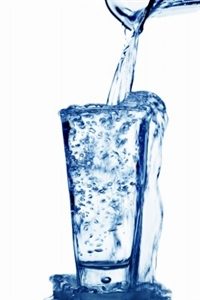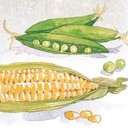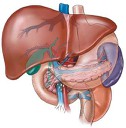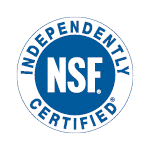ACandi Health Blog Reviews – Optimum Health Series
Review # 5 – Nutrition
Nutrition
Human beings need four basic nutrients:
- Water
- Carbohydrates
- Proteins
- and Fats
In addition to those four basic nutrients, we need vitamins, minerals and other micronutrients to make up a healthy diet.

Drink Only Pure Water
We dealt with one class of micronutrients, that is, phytonutrients, in ACandi Health Review # 1. Information on vitamins and minerals will be published in Review # 6 – Diets & Supplements.
Water
Our bodies are made up of between about 40% to 70% water depending on the percentage of our body fat.
Two important organs of our body have high percentages of water: the brain 70% and the lungs about 90%.
About 83% of our blood is water, which helps digest our food, transport waste and control body temperature.
We therefore need to drink enough water daily to maintain healthy living. It is recommended that adults drink 8 to 10 eight ounce glasses of water daily.
The amount of water an adult drinks should increase depending on that person’s activity based on lifestyle and age.
It therefore makes complete practical sense to ensure that the water we drink is the very best quality drinking water.
NSF (National Sanitation Foundation) International (see the ‘Reference’ link below) is an independent, accredited organisation that tests and certifies products to protect the world’s food and water consumer products and environment.
They have established the following international standards for home use water filter systems:
- NSF/ANSI 42 – Drinking Water Treatment Units – Aesthetic Effects
The Aesthetic Effects standard is used to verify that a drinking water filter effectively removes contaminants that cause undesirable odour and taste (chlorine, particulates).
- NSF/ANSI 53 – Drinking Water Treatment Units – Health Effects
This standard is used to evaluate whether water filters are effective in removing a wide range of chemicals and gases that present a health risk to consumers. Those contaminants include: Cryptosporidium, Giardia, lead, volatile organic chemicals (VOCs) and MTBE (methyl tertiary-butyl ether), that may be present in public or private drinking water.
- NSF/ANSI 55 – Ultraviolet Microbiological Water Treatment Systems
NSF/ANSI Standard 55 establishes the minimum requirements for the certification of point-of-use/point-of-entry (POU/POE) ultraviolet (UV) systems and includes two optional classifications:
Class A systems (40 mJ/cm2) are designed to disinfect and/or remove microorganisms, including bacteria and viruses, from contaminated water to a safe level. Class A systems may claim to disinfect water that may be contaminated with pathogenic bacteria, viruses, Cryptosporidium or Giardia.
Class B systems (16 mJ/cm2) are designed for supplemental bactericidal treatment of public or other drinking water that has been deemed acceptable by a local health agency. Class B systems may claim to reduce normally occurring nuisance microorganisms.
For a residential water filter system that has ALL OF THE ABOVE Water Treatment System NSF Standards; Register As A Customer at The Vitamin Store – Click Here !
For Discounts & FREE Gifts NOW !!
 |
More Info Privacy Policy |
Carbohydrates
Carbohydrates supply energy to the body. They are divided into two categories: Simple carbohydrates or simple sugars such as fructose (fruit sugar), sucrose (table sugar) and lactose (milk sugar). Fruits are rich sources of simple carbohydrates.
The other category Complex carbohydrates are also sugars but with molecules forming longer and more complex chains than simple sugars. Complex carbohydrates also include fibre and starches. Rich sources of complex carbohydrates include: vegetables, whole grains, peas and beans.
When choosing carbohydrates for your diet always select unrefined foods like fruits, vegetables, peas, beans and whole grain products. These foods contain fibre, vitamins, minerals and phytonutrients.

Peas, Beans & Whole Grain foods
Proteins
Proteins are complex chemical compounds that break down into amino acids during digestion. They are essential for the constant repair and replacement of body tissues.
Like carbohydrates there are two categories of proteins, one being Nonessential amino acids which the human body can synthesize from other amino acids.
There are however amino acids that the human body cannot synthesize, these must be ingested, they are called Essential amino acids.
Protein sources are also classified into two groups. Complete proteins which contain ample amounts of essential amino acids and are supplied by meat, fish, poultry, cheese, eggs, milk, soybean products and unsweetened yogurt .
Incomplete protein foods contain only some of the essential amino acids. Those foods are grains, peas, beans and leafy vegetables.
When selecting food for your diet you can combine incomplete protein foods to obtain adequate amounts of essential amino acids. For example you can combine beans and brown rice to obtain complete protein as a high quality substitute for meat. Make sure to get about 50 grams of complete protein a day.
For maximum discount and FREE shipping on protein supplements, Register as a Customer at The Vitamin Store – Click Here !
Fats
Fat is the most concentrated source of energy for the human body and it also protects internal organs, supports metabolism and the absorption of vitamins A, D, E and K by the body.
- The essential fatty acids of omega 3 and 6 cannot be synthesized by the body and therefore need to be ingested similar to essential amino acids (see section above on Proteins). Omega 9 is necessary but non-essential because the body can manufacture modest amounts.
- There are three types of fats: saturated fatty acids, polyunsaturated fatty acids, and monounsaturated fatty acids. These classifications are based on how the carbon and hydrogen atoms are arranged in the molecular structure.
- Saturated Fatty Acids are found mainly in animal products like beef, veal, lamb, pork and ham as well as dairy items such as whole milk, cream and cheese. Some vegetable products like coconut oil, palm kernel oil and vegetable shortening are also high in saturates.
- Rich sources of Polyunsaturated Fatty Acids are corn, soybean, safflower and sunflower oils. Certain fish oils are also high in polyunsaturates.
- Monounsaturated Fatty Acids are found mostly in vegetable and nut oils such as olive, peanut and canola.
Digestion of Fats

The Liver – Digesting Fats
Among the many functions of the liver is the digestion of fats and the production of cholesterol.
Cholesterol is an organic compound essential for the formation and maintenance of cell membranes among other functions.
When we eat Saturated Fatty Acid cholesterol is added to what is already synthesized by the liver. The cholesterol is transported from the liver through the blood stream by low density lipoproteins (LDL) stopping at cells and delivering cholesterol to those cells that need it.
After its journey from the liver whatever excess LDL with cholesterol that remains is deposited in the walls of the arteries, causing the build up of plaque, which eventually narrows the walls of the arteries. Plaque build up in the arteries is associated with heart attacks. This is why the cholesterol transported by LDL is called “bad cholesterol”.
Monounsaturated Fatty Acids lower the risk of high cholesterol levels in your blood stream.
For Discounts & FREE Gifts NOW !!
 |
More Info Privacy Policy |
Presented by
Louis Blake
Email: blake@acandi.ws
First Published: January 28, 2014
Updated: May 19, 2020
© Copyright by Permission of:
ACandi Marketing Enterprises,
PO Box 2071, NMC, Piarco, Trinidad, W.I.
© Copyright All Rights Reserved.
Reference:
- http://www.nsf.org/services/by-industry/water-wastewater/residential-water-treatment/residential-drinking-water-treatment-standards

26 replies on “Nutrition”
Awesome post! Keep up the great work! 🙂
Thank you, White Label SEO.
Great content! Super high-quality! Keep it up! 🙂
After looking into a few of the blog posts on your web page, I truly like your
way of writing a blog. I book-marked it to my bookmark site list and will be
checking back in the near future. Take a look at my website as well and tell me your opinion.
Hi CBD Advocates,
Your website is a well constructed storefront “sales funnel”. How much traffic is it generating and are you getting enough conversions to break even?
Hello there! This post couldn’t be written much better!
Going through this article reminds me of my previous roommate!
He constantly kept preaching about this. I will send this article to him.
Fairly certain he’s going to have a very good read.
Thank you for sharing!
Heya! I know this is somewhat off-topic but I had to ask. Does operating a well-established blog like yours take a massive amount work? I’m completely new to blogging but I do write in my diary every day. I’d like to start a blog so I will be able to share my experience and views online. Please let me know if you have any suggestions or tips for new aspiring bloggers. Thankyou!|
To: Adriana Zheng,
I checked your website and blog postings. From what I’ve seen, there’s nothing for me to teach you, keep on doing what you’re doing.
Fantastic website. A lot of useful info here. I’m sending it to a few friends ans also sharing in delicious. And certainly, thanks to your sweat!|
new orleans viagra viagra canada viagra australia paypal
at hirsizimisin nesin?
men’s health national pharmacies buy prescription drugs from canada
highest rated canadian pharmacies north west pharmacy canada top rated canadian pharmacies online
order prescriptions online without doctor mental illness medicine online order
buying drugs canada viagra from melbourne canadian pharcharmy online no precipitation
what\’s works better viagra or cialis? 150 mg viagra viagra vs cialis
canadian pharmacy trusted online pharmacy reviews best canadian pharmacies
viagra toronto store viagra 100 mg generic canadian pharmacies shipping to usa
top payday loan companies in usa payday loan in mcallen tx payday loans salmon idaho
quick payday loans uk lenders payday loans in north vancouver payday loans in howell michigan
payday loan lawsuit ny cash advance st pete fl cash advance loans in colonial heights va
pharmacy cialis canada cialis 20 mg everyday retinite pigmentosa cialis
payday loans northfield loan calculator money guardian advance america cash advance okc
original cialis 5mg donde comprar cialis foro 5 mg di cialis
viagra 20mg generic buying viagra canada safely viagra online purchase in india
Very smooth article
free robux